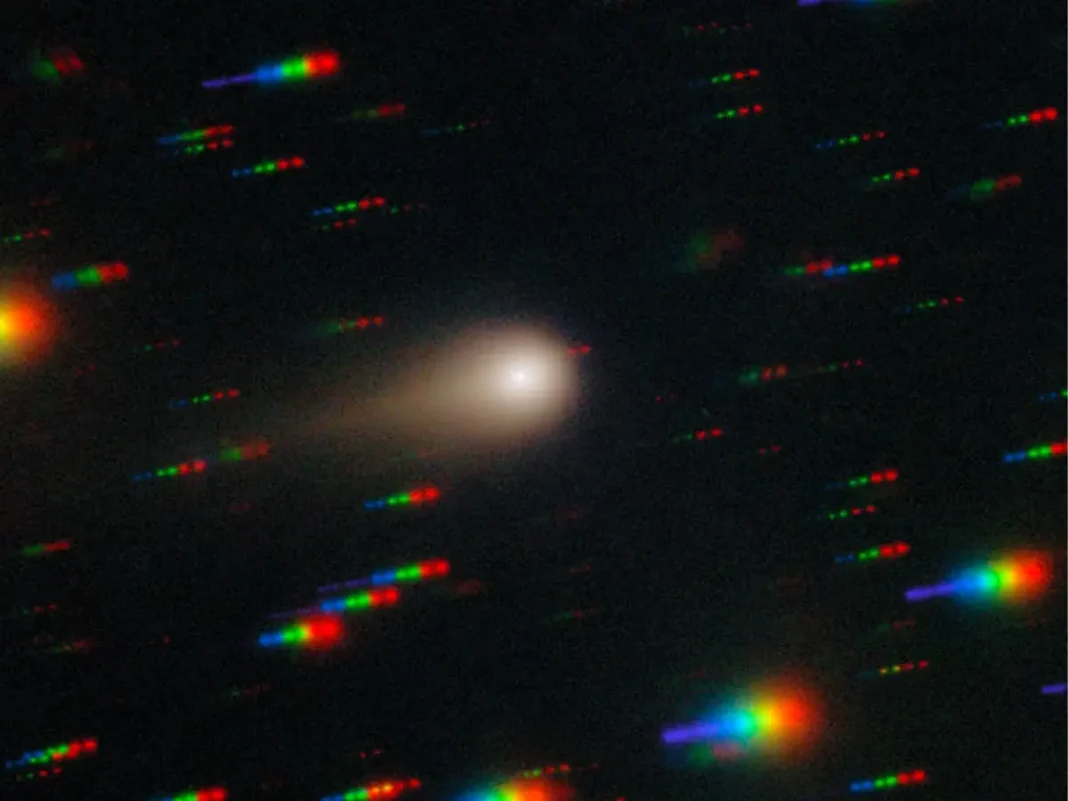Key Takeaways
- 3I/ATLAS exhibits multiple anomalies including sudden brightening and non-gravitational acceleration
- Scientists suggest interstellar travel may have altered the comet’s properties
- Harvard scientist Avi Loeb predicts a potential tenth anomaly
- ESA’s JUICE mission will study the comet in November 2025
The interstellar comet 3I/ATLAS continues to baffle scientists with its unusual behavior after its close encounter with the Sun. Multiple anomalies including sudden brightening, color changes, and non-gravitational acceleration have researchers questioning whether interstellar travel fundamentally changed this alien visitor.
JUICE Mission to Study Interstellar Comet
The European Space Agency’s Jupiter Icy Moons Explorer (JUICE) is preparing to study 3I/ATLAS during a window from November 2-25, 2025. The spacecraft will conduct two observations, with the first scheduled for November 4, approaching as close as 64 million kilometers from the mysterious comet.
How Interstellar Travel Changed 3I/ATLAS
Scientists propose that 3I/ATLAS’s long journey through interstellar space may have altered its fundamental properties. Qicheng Zhang of Lowell Observatory and Karl Battams of the Naval Research Laboratory suggest “oddities in its nucleus properties like composition, shape, or structure” could explain its unexpected behavior near the Sun.
The comet displayed unusual activity, brightening unexpectedly and releasing water at distances where comets typically remain inactive. Researchers note these characteristics could stem from either interstellar travel effects or the unique design of its original planetary system.
The Tenth Anomaly Prediction
Harvard scientist Avi Loeb, who recently identified a ninth anomaly, predicts 3I/ATLAS might soon reveal a tenth oddity. He suggests the comet should develop a massive debris cloud measuring approximately 5 billion tons due to non-gravitational acceleration causing 15% mass loss.
“If a huge plume of gas is missing around 3I/ATLAS, then non-gravitational acceleration would become a tenth anomaly,” Loeb stated in a blog post.
Composition Clues to Origin
Zhang and Battams emphasize that 3I/ATLAS’s internal composition differences from Oort Cloud comets could provide crucial insights into its home planetary system. The scientists wrote: “Without an established physical explanation, the outlook for 3I’s postperihelion behaviour remains uncertain.”
The Lowell Discovery Telescope successfully captured images of 3I/ATLAS on October 31, 2025, after it emerged from the Sun’s glare, while the PUNCH mission satellites also obtained observations of the interstellar visitor.




